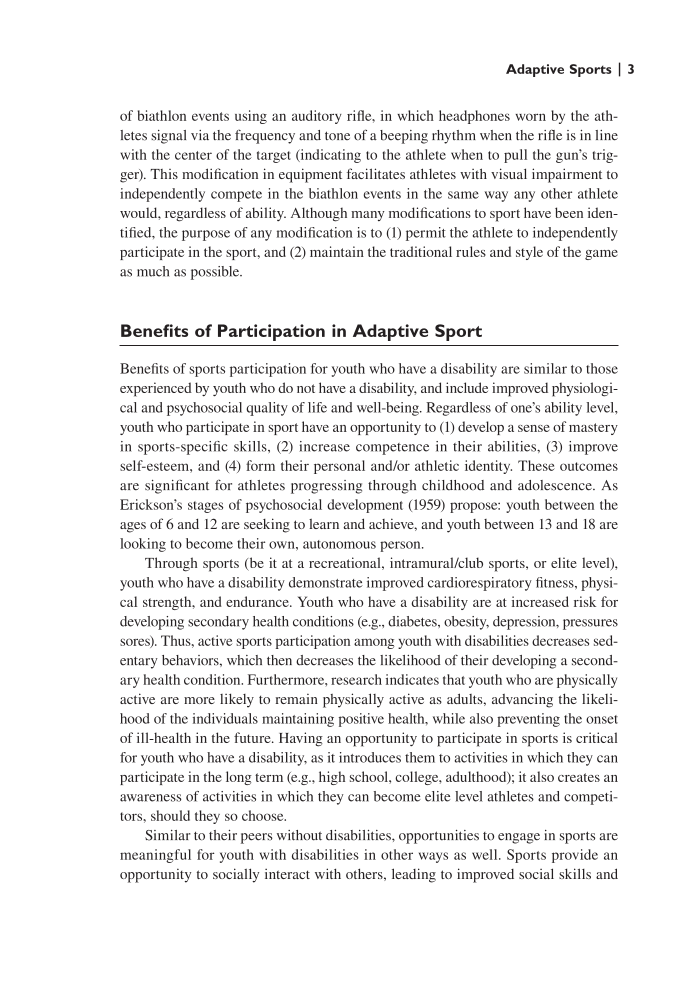Adaptive Sports 3 of biathlon events using an auditory rifle, in which headphones worn by the ath- letes signal via the frequency and tone of a beeping rhythm when the rifle is in line with the center of the target (indicating to the athlete when to pull the gun’s trig- ger). This modification in equipment facilitates athletes with visual impairment to independently compete in the biathlon events in the same way any other athlete would, regardless of ability. Although many modifications to sport have been iden- tified, the purpose of any modification is to (1) permit the athlete to independently participate in the sport, and (2) maintain the traditional rules and style of the game as much as possible. Benefits of Participation in Adaptive Sport Benefits of sports participation for youth who have a disability are similar to those experienced by youth who do not have a disability, and include improved physiologi- cal and psychosocial quality of life and well-being. Regardless of one’s ability level, youth who participate in sport have an opportunity to (1) develop a sense of mastery in sports-specific skills, (2) increase competence in their abilities, (3) improve self-esteem, and (4) form their personal and/or athletic identity. These outcomes are significant for athletes progressing through childhood and adolescence. As Erickson’s stages of psychosocial development (1959) propose: youth between the ages of 6 and 12 are seeking to learn and achieve, and youth between 13 and 18 are looking to become their own, autonomous person. Through sports (be it at a recreational, intramural/club sports, or elite level), youth who have a disability demonstrate improved cardiorespiratory fitness, physi- cal strength, and endurance. Youth who have a disability are at increased risk for developing secondary health conditions (e.g., diabetes, obesity, depression, pressures sores). Thus, active sports participation among youth with disabilities decreases sed- entary behaviors, which then decreases the likelihood of their developing a second- ary health condition. Furthermore, research indicates that youth who are physically active are more likely to remain physically active as adults, advancing the likeli- hood of the individuals maintaining positive health, while also preventing the onset of ill-health in the future. Having an opportunity to participate in sports is critical for youth who have a disability, as it introduces them to activities in which they can participate in the long term (e.g., high school, college, adulthood) it also creates an awareness of activities in which they can become elite level athletes and competi- tors, should they so choose. Similar to their peers without disabilities, opportunities to engage in sports are meaningful for youth with disabilities in other ways as well. Sports provide an opportunity to socially interact with others, leading to improved social skills and
Document Details My Account Print multiple pages
Print
You have printed 0 times in the last 24 hours.
Your print count will reset on at .
You may print 0 more time(s) before then.
You may print a maximum of 0 pages at a time.









































































































































































































































































































































































































































